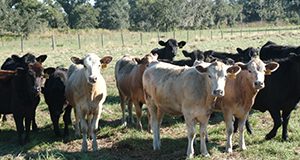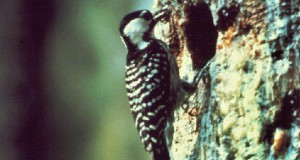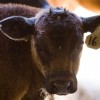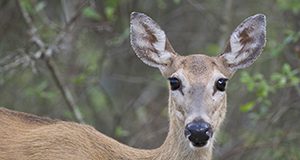 UF/IFAS Extension faculty and state specialists involved in the UF/IFAS South Florida Beef-Forage Program (SFBFP), in conjunction with the UF/IFAS Program Evaluation and Organizational Development unit, created a survey in 1982 that is used to evaluate ranch management practices. The survey is updated and distributed every five years to ranchers in 14 south Florida counties: Charlotte, Collier, DeSoto, Glades, Hardee, Hendry, Highlands, Hillsborough, Lee, Manatee, Martin, Okeechobee, Polk, and Sarasota. There were 102 anonymous responses in 2011. This 6-page fact sheet discusses characteristics of beef operations in south Florida, reproduction, production, marketing, herd health, nutrition, forage production, and environment. Written by Sonja Crawford, Christa Kirby, Tycee Prevatt, Brent Sellers, Maria Silveira, Bridget Stice, Joao Vendramini, and Lindsey Wiggins, and published by the UF Agronomy Department, October 2016.
UF/IFAS Extension faculty and state specialists involved in the UF/IFAS South Florida Beef-Forage Program (SFBFP), in conjunction with the UF/IFAS Program Evaluation and Organizational Development unit, created a survey in 1982 that is used to evaluate ranch management practices. The survey is updated and distributed every five years to ranchers in 14 south Florida counties: Charlotte, Collier, DeSoto, Glades, Hardee, Hendry, Highlands, Hillsborough, Lee, Manatee, Martin, Okeechobee, Polk, and Sarasota. There were 102 anonymous responses in 2011. This 6-page fact sheet discusses characteristics of beef operations in south Florida, reproduction, production, marketing, herd health, nutrition, forage production, and environment. Written by Sonja Crawford, Christa Kirby, Tycee Prevatt, Brent Sellers, Maria Silveira, Bridget Stice, Joao Vendramini, and Lindsey Wiggins, and published by the UF Agronomy Department, October 2016.
http://edis.ifas.ufl.edu/ag410
Tag: Lindsey Wiggins
Using the Ecosystem Services Approach to Advance Conservation Efforts on Private Lands
Decision-makers in Florida have shown increased interest in using the Ecosystem Services (ES) approach to reward ecosystem conservation efforts on private lands. For example, payments for ecosystem services (PES) strategies have been effective in motivating landowners to conserve ecosystems on their land. Some landowners may find a better understanding of the ES approach to be useful when deciding to participate in a PES program. This 5-page fact sheet written by Melissa M. Kreye, Elizabeth Pienaar, Raoul K. Boughton, and Lindsey Wiggins and published by Department of Wildlife Ecology and Conservation will provide landowners, Extension agents, government and agency leaders, and other stakeholders with a better understanding of how ES are classified, the different ways ES can be valued, how quantifying ES values can help support conservation efforts on private lands in Florida, and a few of the challenges inherent in using the ES approach.
edis.ifas.ufl.edu/uw414
Safe Harbor Agreement: A Regulatory Assurance under the Endangered Species Act

The involvement of the private sector is critical for the conservation and recovery of many species, but landowners’ fears that increased management restrictions could keep them from enjoying their land can present a challenge to securing their trust and assistance in conservation efforts. A Safe Harbor Agreement is a regulatory assurance that removes the risk of additional regulation in the future and encourages landowners to maintain important habitat on their lands. This three-page publication written by Melissa M. Kreye, Elizabeth F. Pienaar, Raoul K. Boughton, and Lindsey Wiggins and published by the Wildlife Ecology and Conservation Department provides Extension agents, decision-makers, and landowners with a basic understanding of a landowner’s obligations and the benefits of enrolling.
http://edis.ifas.ufl.edu/uw403
Utilization of Cull Vegetables as Feedstuffs for Cattle (AN280)
 Cull vegetables can be an economical source of nutrients in beef cattle diets. They may be offered to beef cattle producers at a decreased cost or no cost. This 3-page fact sheet discusses the nutrient content and characteristics that need to be understood when utilizing cull vegetables. Written by Courtney Davis, Lindsey Wiggins, and Matt Hersom, and published by the UF Department of Animal Sciences, August 2012.
Cull vegetables can be an economical source of nutrients in beef cattle diets. They may be offered to beef cattle producers at a decreased cost or no cost. This 3-page fact sheet discusses the nutrient content and characteristics that need to be understood when utilizing cull vegetables. Written by Courtney Davis, Lindsey Wiggins, and Matt Hersom, and published by the UF Department of Animal Sciences, August 2012.
http://edis.ifas.ufl.edu/an280
